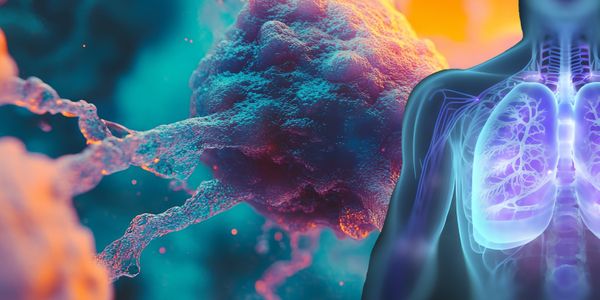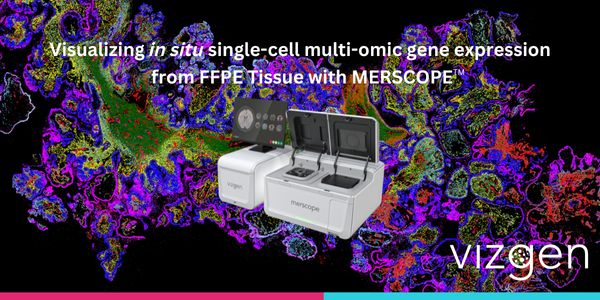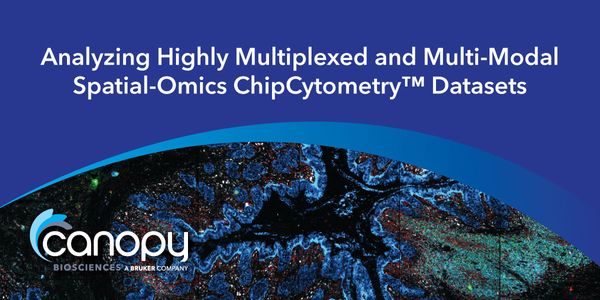Spatial Transcriptomics
Spatial transcriptomics utilizes a variety of methods to define cell types, by means of mRNA data, to their histological locations. Spotted arrays of specialized mRNA probes are often used capturing information about subcellular localization of mRNA molecules.
-
NOV 12, 2025 | 7:00 AMIn recognition of Pancreatic Cancer Awareness Month, join us to explore how cutting-edge technologies are transforming our understanding of pancreatic ductal adenocarcinoma (PDAC), one of th...Speaker: Dr. Max Reichert , Dr. Hartland Jackson , Dr. Andrea RadtkeSponsored By: Leica MicrosystemsOCT 30, 2025 | 9:00 AMAging is associated with progressive white matter degeneration, which impairs brain structure and function. Defects in myelinating glial cells, combined with chronic neuroinflammation, contr...Our experience collaborating with oncology and immunology leaders in the pharmaceutical and biotech space has revealed the numerous challenges in every stage of drug development. From target...Speaker: Sathiya Manivannan
APR 29, 2025 | 8:00 AM
Only one in four transplant waitlisted patients receive a life-saving organ. Xenotransplantation of pig organs into humans is a promising avenue for addressing organ shortage. Understanding...
JUL 24, 2024 | 11:00 PM
C.E. CREDITS
Spatial transcriptomics offers a revolutionary approach to understanding the tumor microenvironment (TME) in solid tumors by preserving the spatial context of gene expression, which is cruci...
JUN 27, 2024 | 6:00 AM
C.E. CREDITS
High-resolution spatial transcriptomics stands at the forefront of technological advancements, offering transformative capabilities in the domain of tumor biology research. In this presentat...
APR 10, 2024 | 9:00 AM
Leveraging advancements in spatially resolved single-cell profiling, our study enhances understanding of glioma evolution and the complex tumor microenvironment. Through spatially resolved m...
MAR 12, 2024 | 10:00 AM
In this webinar, we will briefly introduce Vizgen’s Vizgen® MERSCOPE® Platform for spatial transcriptomics. Following this introduction, we will showcase the capabilities of ME...
NOV 07, 2023 | 10:00 AM
In the last 5 years, the US Food and Drug Administration has approved 4 anti-CD19 chimeric antigen receptor T cell (CART19) products for relapsed/refractory B cell lymphomas and leukemia. Ho...
FEB 14, 2023 | 10:00 AM
Date: February 14, 2023 Time: 10:00am (PST), 1:00pm (EST), 7:00pm (CET) The dorsal pontine tegmentum (PnTg) is part of the Pons, the largest section of the brainstem. It is a complex region...
NOV 17, 2022 | 7:00 AM
Date: November 17, 2022 Time: 7:00am (PST), 10:00am (EST), 4:00pm (CET) In order to truly understand cell biology, researchers need easy-to-use tools that preserve the natural complexity of...
OCT 20, 2022 | 9:00 AM
Date: October 13, 2022 Time: 11:00am (PDT), 12:00pm (EDT), 6:00pm (CEST) Single-cell atlases mapping immune cells provide hints on how immune cells mature, attenuate, and disseminate through...
SEP 27, 2022 | 10:00 AM
Date: September 27, 2022 Time: 10:00am (PDT), 1:00pm (EDT), 7:00pm (CEST) Alzheimer’s disease is the most common cause of dementia and the seventh leading cause of death in the United...
JUN 22, 2022 | 11:00 AM
Date: June 22, 2022 Time: 11:00am (PDT), 2:00pm (EDT), 8:00pm (CEST) ChipCytometry™ is a technique for collecting and analyzing highly multiplexed spatial cytometry data that has been...
The severe acute respiratory syndrome coronavirus 2 (SARS-CoV-2) that emerged in late 2019 has spread globally, causing a pandemic of respiratory illness designated coronavirus disease 2019...
Speaker:
Arutha Kulasinghe, PhD
The coronavirus SARS-CoV-2 has led to a worldwide pandemic. Beside respiratory symptoms, infected people may develop neurologic dysfunctions such as loss of smell and taste, also seizures, a...
Speaker:
Susanne Krasemann, MD, PhD
MAR 31, 2022 | 11:00 AM
Date: March 31, 2022 Time: 11:00am (PDT), 2:00pm (EDT), 8:00pm (CET) Formalin-fixed paraffin-embedded (FFPE) tissues are the most widely used clinical sample types in histology and molecular...
NanoString has started an ambitious project called the "Spatial Organ Atlas." The goal of this initiative is to map the architecture of tissues with spatially resolved whole transc...
Speaker:
Alison VanSchoiack, PhD
High-throughput sequencing technology such as RNASeq and whole genome sequencing has enabled deep characterization of health and disease states. Biomarker discovery by these means has only h...
Speaker:
Esperanza Anguiano, PhD, MS-MBA
Presented at: Drug Discovery & Development Virtual Event Series 2022
Sponsored By: NanoString Technologies
Sponsored By: NanoString Technologies
OCT 26, 2021 | 11:00 AM
Date: October 26, 2021 Time: 11:00am (PDT), 1:00pm (EDT) The retina is the light-sensing part of the visual system and is composed of six neuron types and several non-neuronal cell types, wi...
OCT 21, 2021 | 7:00 AM
Date: October 21, 2021 Time: 7:00am (PDT), 10:00am (EDT) To simultaneously visualize multiple markers within the same sample enables a more detailed view of cellular phenotypes and how they...
Severe SARS-CoV-2 infection often leads to development of acute respiratory distress syndrome (ARDS), with profound pulmonary patho-histological changes post-mortem. In this study, we utiliz...
Speaker:
Camilla Margaroli, PhD
Technological advances such as single-cell RNA sequencing accelerated our understanding of cellular diversity in tissues. However, the ability to elucidate this cellular heterogeneity while...
Speaker:
Jeroen Aerts, PhD
In this preliminary experiment, we used spatial transcriptomics to assess the gene expression profiles of microglia or astrocytes in relation to their distance from plaques. We compared 18-m...
Speaker:
Frances Edwards, PhD
























